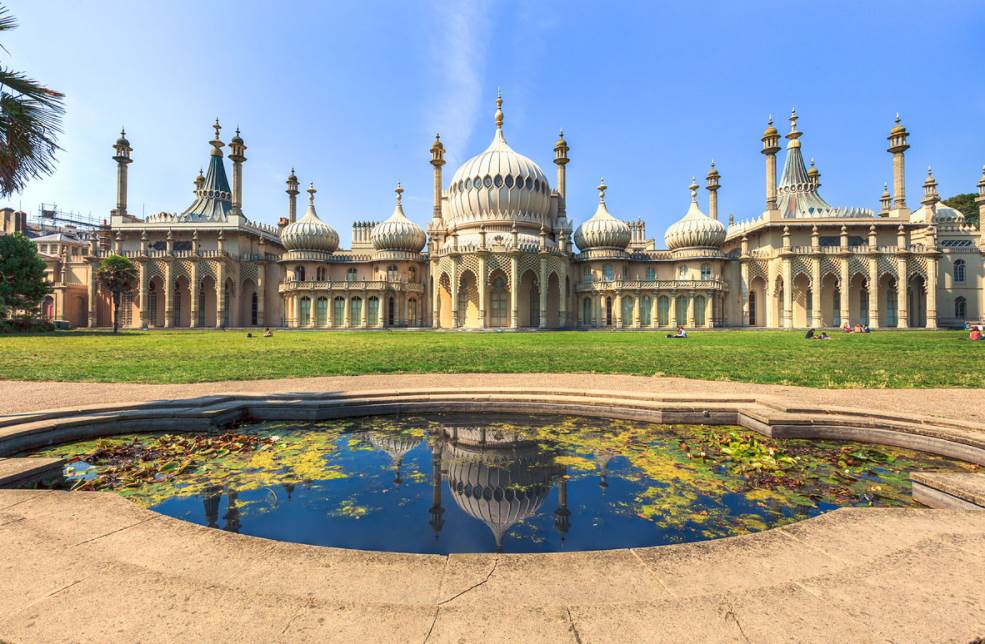Romanticism was the predominant art movement of the first half of the 19th century. It originated in Europe as a response to the Industrial Revolution and the Age of Enlightenment.
Rationality was replaced with a high emphasis on individuality and human emotion. The movement had a profound effect on culture in the Western world and was reflected in the visual arts, music, and literature.
Romantic architecture aimed to revive styles of the past as a reaction to Neoclassical architecture that had emerged in the 18th century. Medieval architecture was romanticized and this culminated in the Gothic Revival style.
In this article, we’ll take a closer look at some of the most famous Romantic buildings, structures that were constructed during the Romantic era of the 19th century.
1. Neuschwanstein Castle
Neuschwanstein Castle can easily be described as the epitome of famous Romantic buildings. Constructed majestically on top of a hill in Southern Bavaria, Germany, it overlooks that plains north of the Alps mountain range.
The castle was commissioned by King Ludwig II of Bavaria and it was dedicated to his idol, German composer Richard Wagner. Its architectural design is especially picturesque, making it one of the most famous castles in Europe.
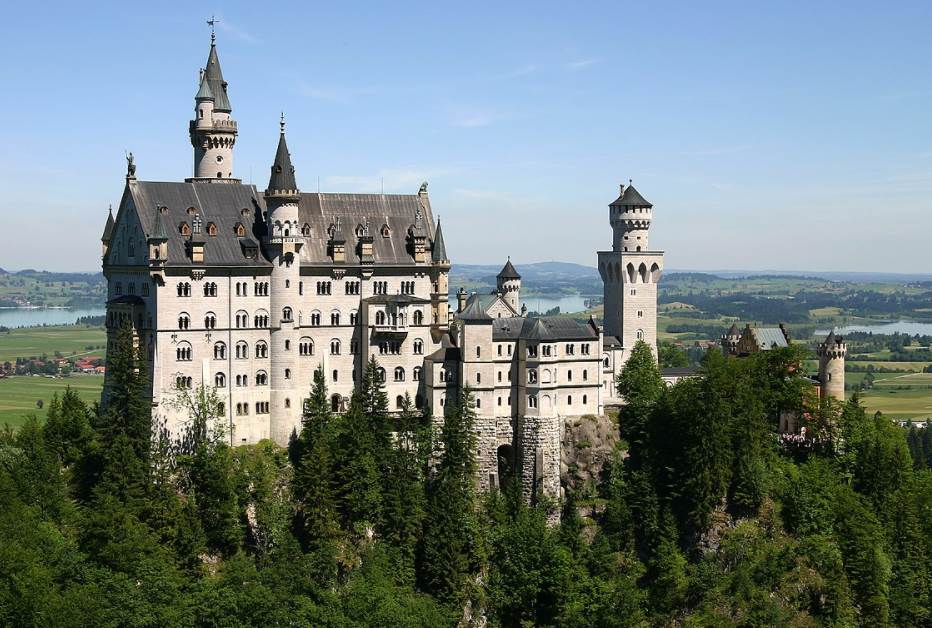
2. Sacré-Coeur
The Sacré-Coeur is officially known as the “Basilica of the Sacred Heart of Paris.” Located on top of Montmartre Hill, it’s one of the most amazing churches you’ll ever come across and one of the most astounding buildings in Paris.
It took a while to build this magnificent structure as it was completed between 1875 and 1914. It incorporates a combination of Romanesque and Byzantine architectural styles and is world-famous for its elongated white domes that overlook La Ville Lumière.
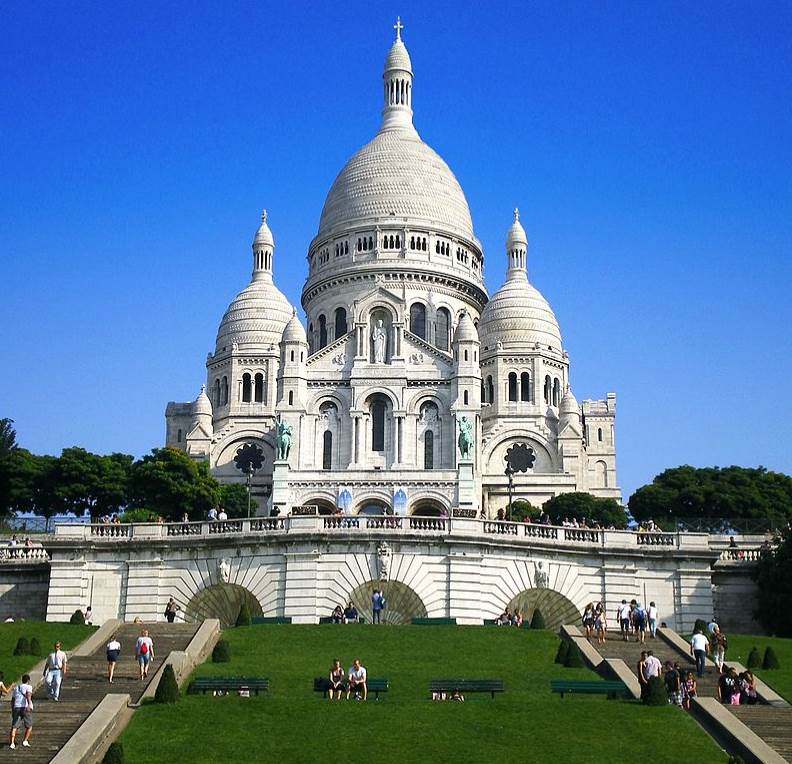
3. Palais Garnier
The Palais Garnier is one of the most opulent structures ever constructed. This amazing opera house features a wide variety of architectural styles and was constructed between 1861 and 1875 to serve as the main venue of the Paris Opera.
The architect of the building, Charles Garnier (1825-1898) after who the building was named, referred to his architectural style as the “Napoleon III style.” This was a reference to the man who commissioned it. The interior is dominated by the Grand Staircase, a masterpiece of the Romantic era.
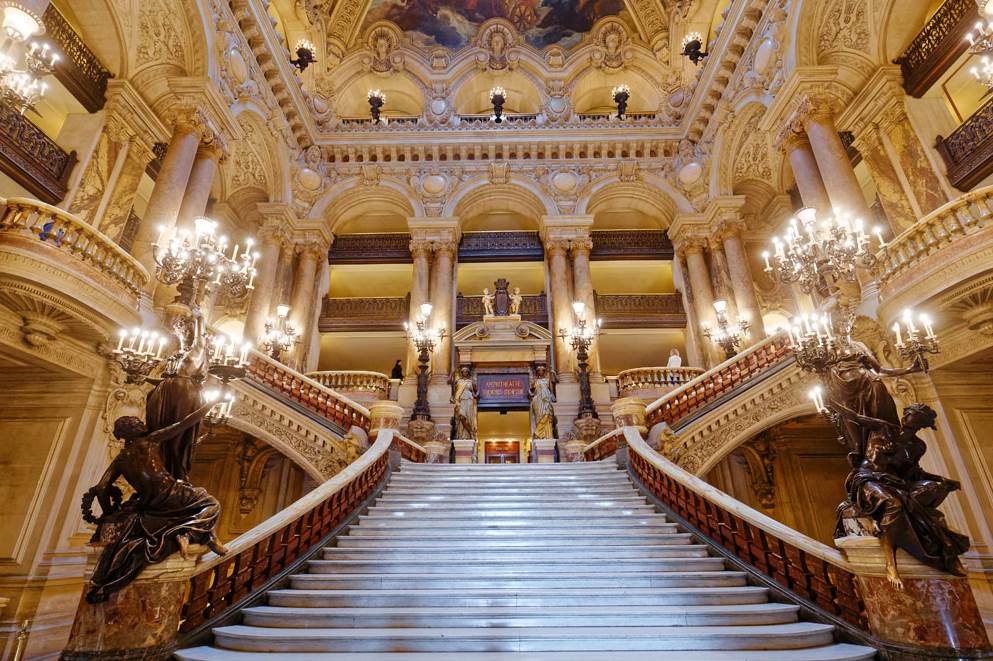
4. Cologne Cathedral
Cologne Cathedral is an amazing structure for multiple reasons. Its construction began way back in 1248 but was never really completed until the final phase that took place during the Romantic era between 1842 and 1880.
The original plans of the medieval Gothic Cathedral were found during this period and it activated the plans to finally complete the building. This went hand in hand with the increased Romantic interest of the Middle Ages, resulting in the Gothic Revival elements we can see today.
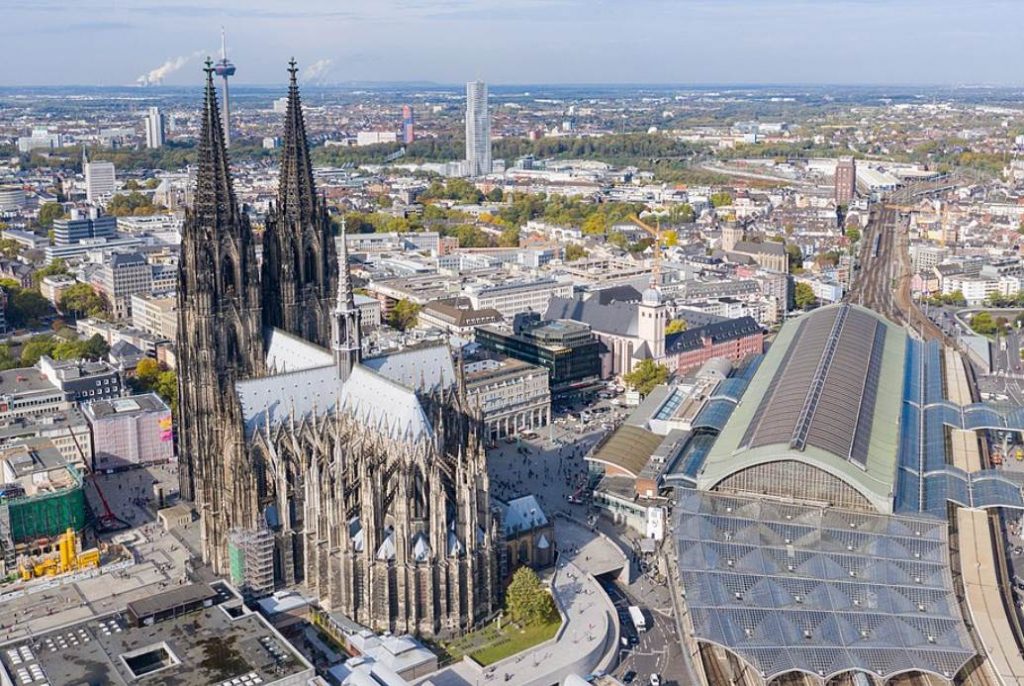
5. Pena Palace
Pena Palace is one of the most famous landmarks in Portugal as the colorful structure dominates the landscape just west of Lisbon. It was built on top of a hill near the town of Sintra which is situated within the Sintra Mountains.
The structure is another eclectic building as it incorporates a wide variety of architectural styles. These include the Neo-Gothic, Neo-Manueline, Neo-Islamic, and Neo-Renaissance styles. It’s considered to be one of the most notable expressions of Romantic architecture in Europe.
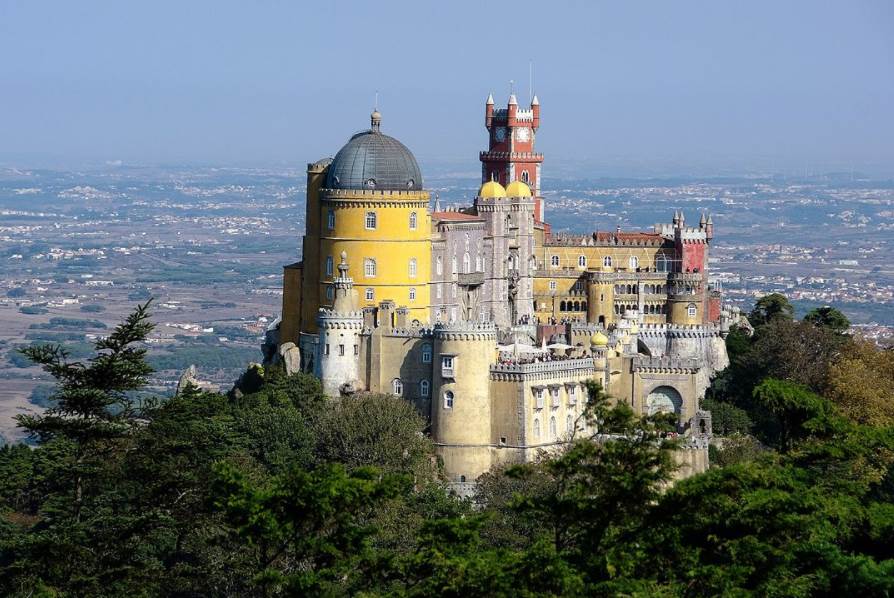
6. Boldt Castle
Boldt Castle is one of the most famous expressions of Romantic architecture in the United States. This landmark structure is located on Heart Island in the Saint Lawrence River in the town of Alexandria in New York State. This is part of the Thousand Island archipelago.
The structure was commissioned by George Boldt, the manager of the world-famous Waldorf-Astoria Hotel in New York City, and completed between 1900 and 1904. It was designed in the “Châteauesque” style, a revival style of the “Châteaux” and Renaissance buildings constructed in France.
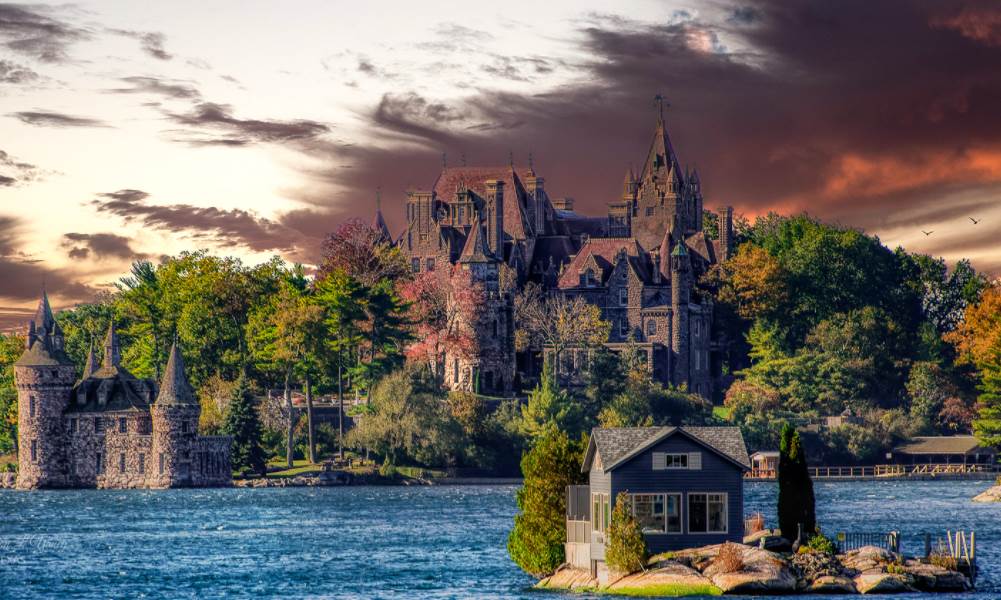
7. Hameau de la Reine
Hameau de la Reine translates to “The Queen’s Hamlet” and was one of the first expressions of Romantic architecture in Europe. It was commissioned by Queen Marie Antoinette in 1783 and is located in the immense domain of the Palace of Versailles near Paris.
It was built as a private retreat for the queen and her closest associates and was an attempt to recreate rural life, away from the opulent atmosphere of the palace itself. It featured a real farm that produced milk and butter, although it was designed as a folly for the queens herself.
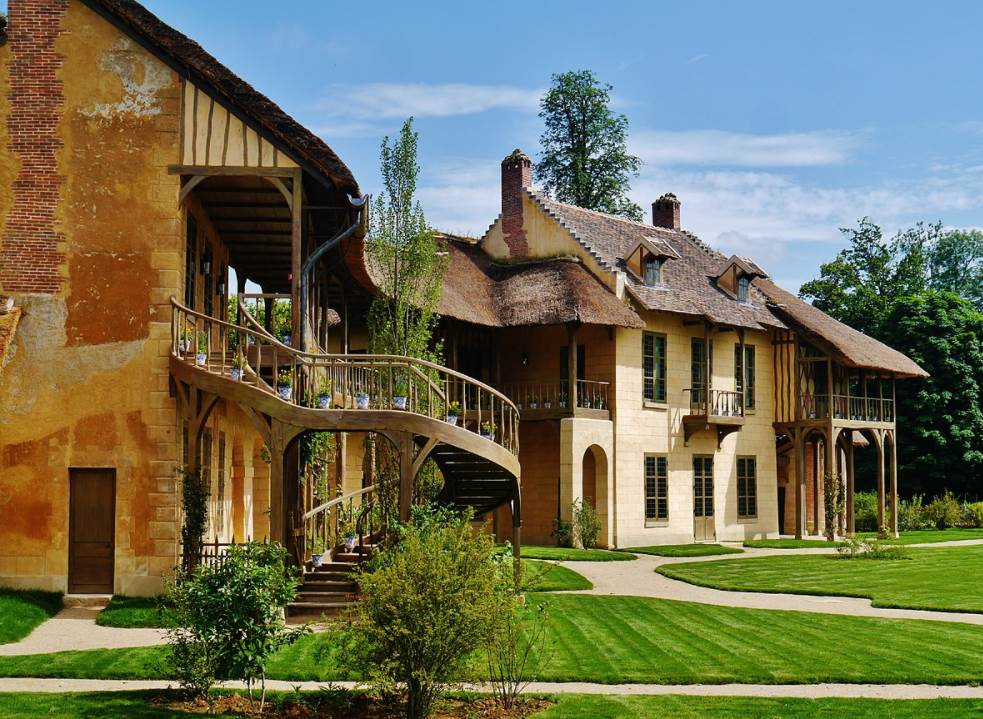
8. Royal Pavillion in Brighton
The Royal Pavilion is also referred to as the “Brighton Pavillion” and is a former royal residence located in the city of Brighton. This seaside resort is located on the South Coast of England which means that the pavilion was constructed as a seaside retreat for the man who commissioned it, George IV (1762-1830).
It’s the most famous Romantic building in England and it was designed in the Indo-Saracenic architectural style. This was the most popular style used by British architects in India in the 19th century and drew inspiration from Mughal architecture. Today, it’s a tourist attraction administered by a charity called the Royal Pavilion & Museums Trust.
